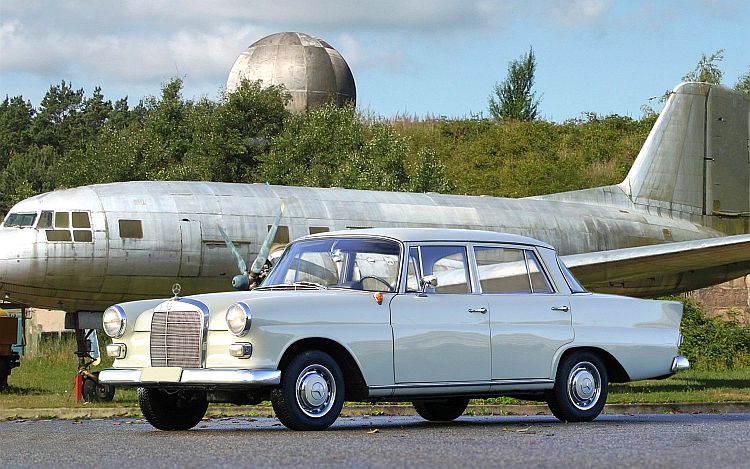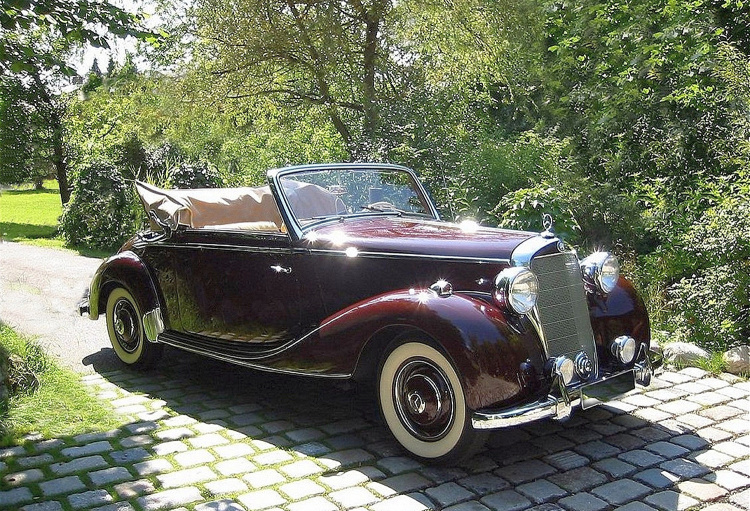A Mercedes 180D called Bakkie
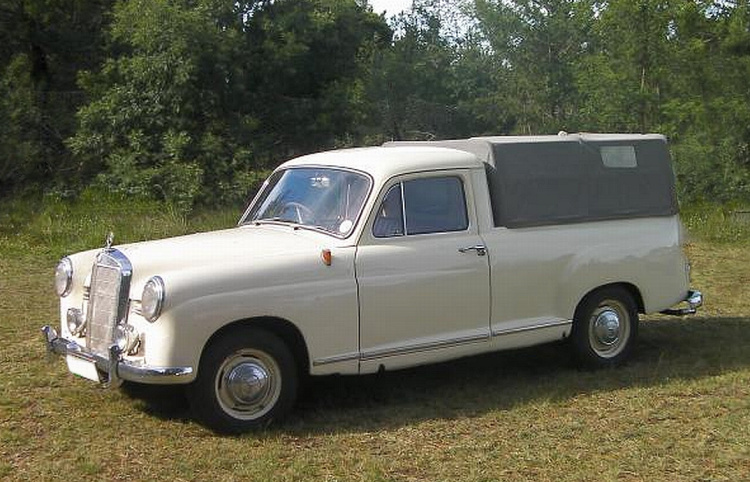
Mercedes 180D Bakkie: One of the major tasks of Daimler-Benz after the war was the rebuilding of their factories and the increase of export business. Traditionally one of the biggest export markets was South America, where a sizeable part of the Mercedes 170 and later 180 export sales went. In order to avoid costly import taxes, those cars were usually shipped as CKD (completely-knocked-down) models and assembled locally.
But it was not only the sedan that was produced in these markets. More and more cars were converted to more utilitarian usage and sold as station wagons and pick-ups.
Another interesting market, which was just on the brink to open up, was South Africa. In the early 1950s, Daimler-Benz had six importers, who sold next to Mercedes also other German cars such as Borgward or DKW. The three largest were Stanley Porter in Cape Town, Haaks Garage in Pretoria and Cargo Motors in Johannesburg.
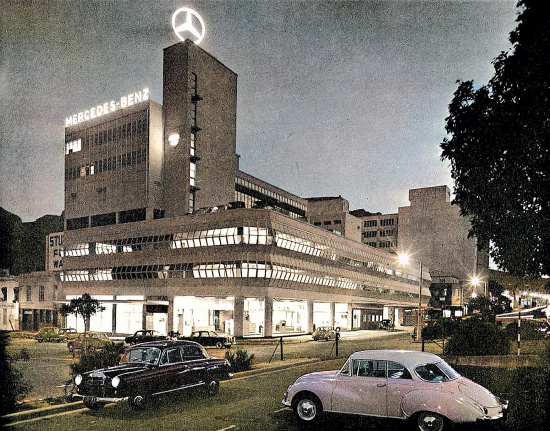 A 1963 photo of the Stanley Porter dealership in Cape Town, Buitengracht Street
A 1963 photo of the Stanley Porter dealership in Cape Town, Buitengracht Street
But in the mid-1950s it became increasingly difficult to import foreign made sedans, as the South African government had applied strict import quota. This way the country wanted to convince international car manufacturers to establish local assembly and production facilities. The sales of newly imported Mercedes Sedans had slowed to a mere 100 units annually and the six importers used the help of the Daimler-Benz representative office in Johannisburg to have an arrangement with Suttgart to switch to the importation of so-called “chassis-cabs” or “half-cars”. At that time Daimler-Benz was not ready yet to ship CKD models, as they still lacked proper facilities in South Africa for the assembly of cars.
Those half-cars were models with the body section going only up to the B-pillars. And they were not going to be finished as sedans, but as pick-ups instead. Pick-ups were classified as commercial vehicles, which were not part of the strict import quota system.
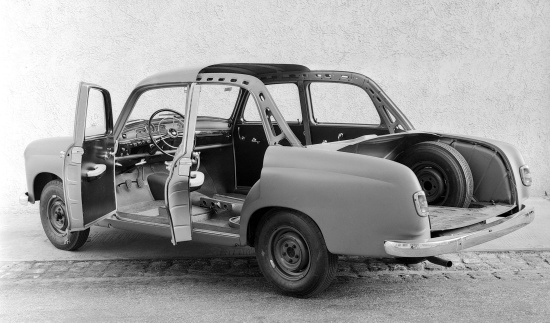
This is the 180 that Daimler-Benz usually shipped to its coachbuilders for conversion to ambulance cars or hearses. The rear doors and fenders were left intact. It is assumed that the German coachbuilder Binz used this car as basis for its own pick-up conversion
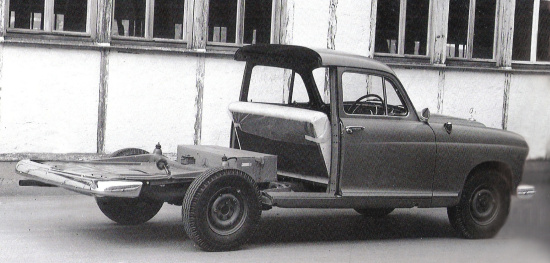 The cars shipped to South Africa and other dealer networks looked different
The cars shipped to South Africa and other dealer networks looked different
Due to its utilitarian character, there was only one model chosen for this deal: the W120 Mercedes 180D with the 1.767cc (107.7 cu in) OM636 VII engine. That engine was still the old oil-burner that had found its way into the 170D in 1949. It was the first Diesel engine, Daimler-Benz introduced after the war. In Sept. 1955 it had been upgraded from 40 hp at 3,200 rpm to 43 hp at 4,500 rpm, delivering a torque of 10.3 mkg (75 ft/lbs) at 2,000 rpm. Considering a kerb weight of 1,220 kg (2,684 lbs), that engine might have been acceptable in the 1950s, but today it is quite a getting used to.
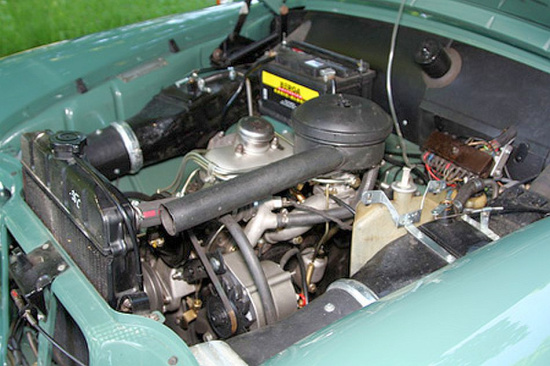
The engine was almost indestructible, but would be quickly stretched to its limits under full load
Getting the approval from Stuttgart for a Mercedes 180D half-car was one thing, a much more difficult undertaking proved to be finding an adequate coachbuilder in South Africa, who could build a load box that was at par with the quality of the rest of the car. After all that box was not only to be used to carry goods, in most cases it would be used for people transportation. A company called “Morewear Industries” located in Germiston was found to be able to fabricate the load box as desired and the end result was convincing not only quality- but also design-wise.
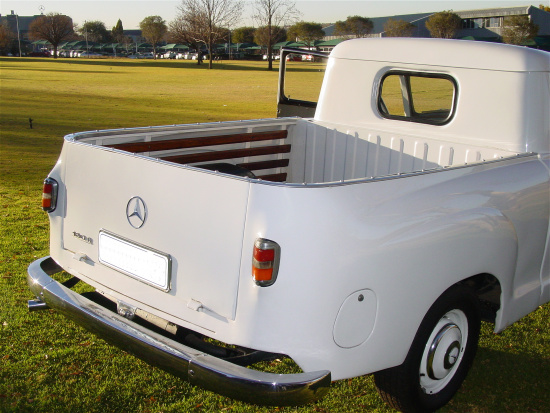
The load bin of a perfectly restored Bakkie
The first Mercedes 180D ponton pick-up models went on sale in 1955. While the German word for pick-up is “Pritsche”, the Africaans word is “Bakkie”. A quick search on Wikipedia reveals that the word Bakkie is a generic South African/Namibian term used for any light duty pick-up vehicle. Later such vehicles from Datsun, Nissan and Toyota all carried the “bakkie” name. So it was not a word unique to the Mercedes 180D pick-up. It has its origin in the Africaans word “bak”, which stands for a covered bowl. Pick-ups were and are not too popular in Europe, as vans and station wagons are used for similar purposes. The situation is different in other parts of the world and South Africa is a good example for this.
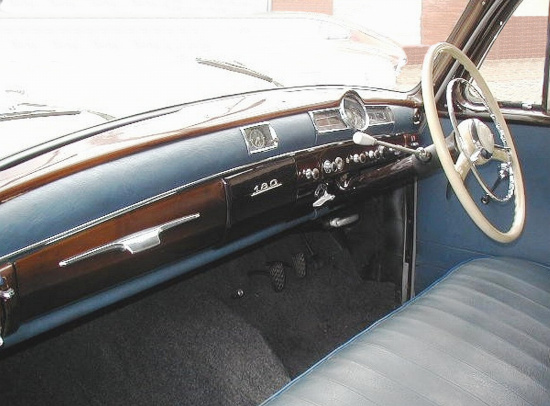
Another popular word for the Mercedes 180D pick-up in the 1950s was “Stanley Porter” after the Cape Town Mercedes importer. Bakkies were produced between 1955 and 1958 and around 400 are reported to have been sold. The exact number is not known, as Daimler-Benz did not list those half-cars separately. Some 2,439 chassis/half-cars of the 180D with the OM636 engine were sold by Stuttgart between Feb. 1954 and July 1959.
The production of the Bakkie ceased in 1958. Recognizing the potential of the South African market, Daimler-Benz had started local assembly of the 180 sedan in East London in January 1958 and continued later with the 190 W110. These cars were not anymore restricted by the import quota.
The success of the Bakkie did not go by unnoticed in Germany. Binz, an established German coachbuilder with close ties to Daimler-Benz quickly started production of its own version of a Bakkie.
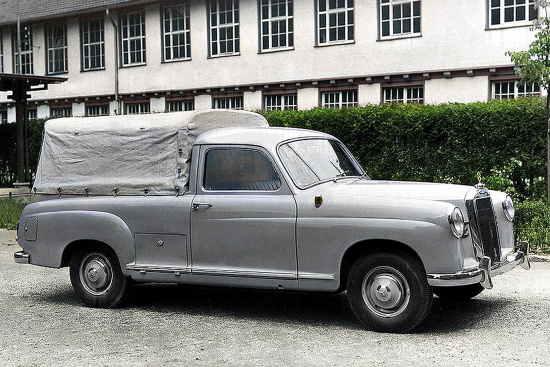
A 1956 Binz pick-up. Note the shorter cabin, no gap between cabin and load area and the spare wheel door under the load bin
When looking closely at both cars, one can find distinct differences. The Binz car had the load-box between the unaltered rear fenders, while the original Bakkie had the fenders integrated into the box, which gave the car a different look. Also the taillights are positioned higher. The Bakkie’s cabin is slightly longer and its rear part more curved, so that it can accommodate the spare tire behind the left seat. The Binz car’s cabin is shorter, it has the spare wheel in a separate compartment beneath the load area, accessible through a small hatch. Another prominent difference is the gap between cabin and box of the Bakkie. The Binz car lacks it. It is estimated that Binz produced around 450 pick-ups. How many of them have been exported to South Africa is not known.
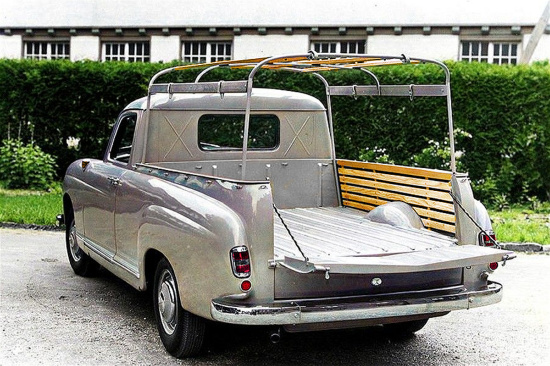
The Binz car with fully modeled rear fenders
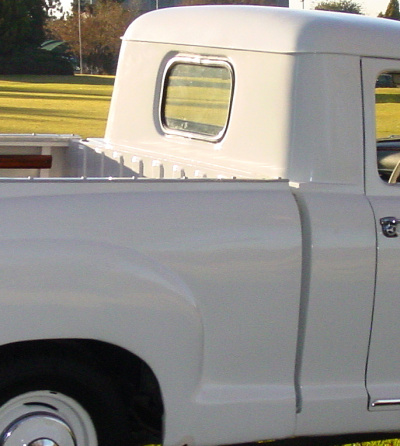
One can clearly see in this photo the Bakkies’ gap between cabin and load bin
Another German coachbuilder with an interest in pick-ups was Haegele from Moessingen near Stuttgart. Haegele had already produced pick-ups, panel vans etc of the 170V.
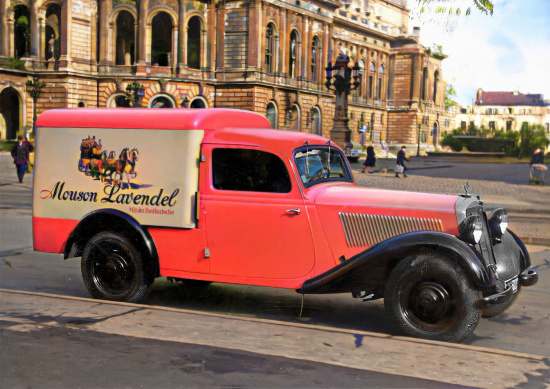
A Haegele built 170V Panel Van from 1948
The 180 (photo below) was a new project and looked with its fender-less design more like the Bakkie than the Binz car. It is doubtful that any of the Haegele cars found their way to South Africa.
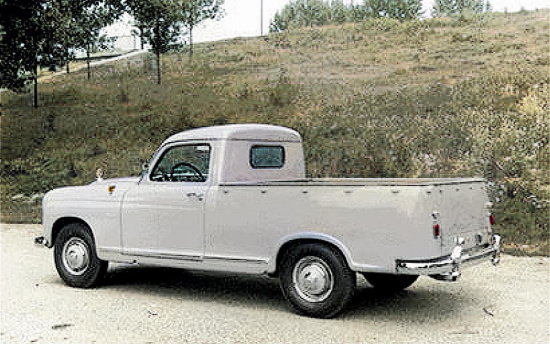
Bakkies and Binz model combined, there might have been a total of around 500 to 550 Mercedes 180D pick-ups on the streets of South Africa at the end of the 1950s. It is estimated that today only some 10 of them have survived, most (if not all) of them the local Bakkie version.
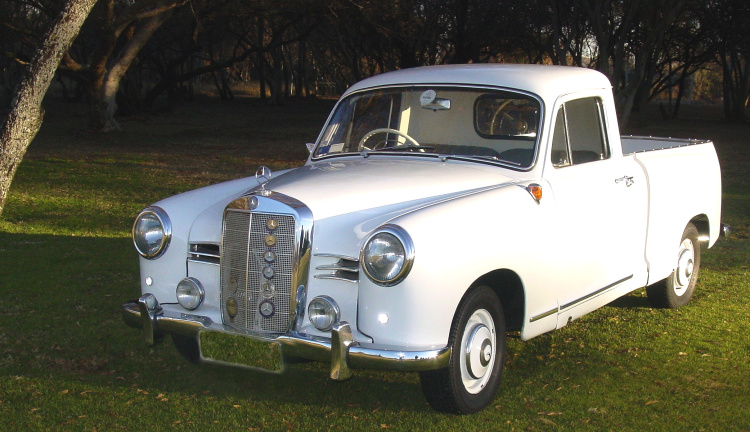
If you found this little journey into the South African history of the ponton Mercedes of interest and would like to read more about the 180 and other Mercedes ponton cars, here is the link to my book on the Amazon ssite. This is the US site, on Amazon sites in other countries the title of the book is the same. I hope you will enjoy.
Acknowledgments: The white Bakkie pictures are courtesy of Gary Bowes, SA. The Mercedes Binz pictures are courtesy of Binz Karosseriebau and the Mercedes 180D chassis cars are courtesy of Daimler AG.
